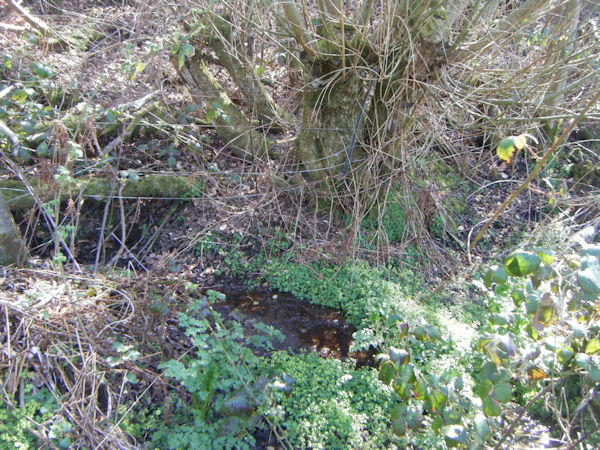 |
Dedication: Saint Cywair Location: Llangower Coordinates: 52.87133N, -3.63667W Grid reference: SH899316 Heritage designation: none |
 |
Dedication: Saint Cywair Location: Llangower Coordinates: 52.87133N, -3.63667W Grid reference: SH899316 Heritage designation: none |
St Cywair, the patron saint of the parish, is probably the same as the 6th century St Gwawr, one of King Brychan's many saintly children (although some sources suggest that she was his grand-daughter instead). Gwawr was the mother of Llywarch Hen, a famed 7th century bard who is associated with nearby Llanfor, and she may well have spent time in the area, perhaps then founding the church of Llangower.
Although Ffynnon Gower almost certainly dates from the time of St Gwawr, the earliest reference that I have found to its existence dates from the late 17th or very early 18th century. This early reference was made in around 1700 by Edward Lhuyd, who mentioned that "Ffynnon Gower mewn chwarter milltir ir Eglwys lle y byddys yn golchi plant rhag y llechin", or "Ffynnon Gower is within [a] quarter of a mile of the church, where they used to bathe children for the rickets".
It appears that Ffynnon Gower's existence was known of throughout the 19th century. Nicholas Carlisle mentioned it in 1811 in his Topographical Dictionary of Wales, as did David Richard Thomas, in his History of the Diocese of St Asaph (1874). However, by the time that the Royal Commission visited the site in 1913, the name of Ffynnon Gower had been misapplied to another spring nearby, and it had clearly been neglected for some time:
|
The immediate neighbourhood of this well is now so boggy that its exact position and limits can with difficulty be made out. It stands on the verge of Llyn Tegid, about half a mile south of the parish church, between the highroad and the railway, and is to be distinguished from the more accessible spring with stone and trough which has usurped the name of Ffynnon Gower. The Inspecting Officer was informed by Mrs. Jones of Ffynnon Gower farm that the character of the water of the two springs was quite different, and that she remembered in her girlhood her father removing some stones that were around St. Gower's well. Edward Lhuyd says that the water of Ffynnon Gower was reputed to be a cure for rickets in children. - Visited, 1st October, 1913 |
Ffynnon Gower has always been marked and named on historical Ordnance Survey maps; rather strangely, however, these maps have always noted that this was only the "site of" the well. As early as 1887, when the first Ordnance Survey map of Llangower was published, the "site of Ffynnon Gower" was marked on the map. Nonetheless, Ffynnon Gower did certainly exist, as it was described in detail by the Royal Commission. Today, Ordnance Survey maps fail to include the well, which does not seem to have ever been destroyed. This is yet another example of OS surveyors either looking in the wrong place for something, or, in this case, not looking for it at all (see St Chad's Well at Barton upon Humber in Lincolnshire, and the Lady Well at Thornbury in Herefordshire).
When I visited the site in the April of 2025, it definitely was located in boggy ground. The spring was evidently producing water, although, as the Royal Commission described, it was difficult to see exactly where it was coming out of the ground, as its source was covered with rusty coils of barbed wire that had clearly been dumped there from the roadside. It is very unlikely that the well would be used for bathing rickety children today!
|
Access: The well is located on private land, but it can be seen quite clearly from the roadside. |
Copyright 2025 britishholywells.co.uk